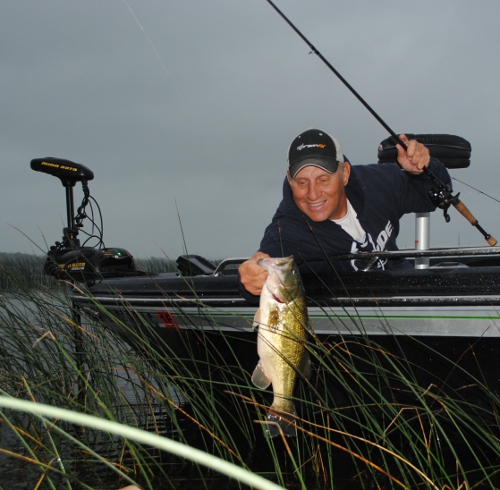
To some anglers, lure color isn’t that important. To other anglers, color is very important. To the most successful anglers, lure color is part of the equation. In a good number of situations, whether it be open-water or ice-fishing, the color of your lure can affect how many fish you catch.
It’s especially obvious while ice-fishing that color is important. When we’re on the ice, our eyes are usually glued to the depth-finder. You can see everything that goes on directly below that hole. If a fish comes in and looks at your bait but doesn’t eat it, you know about it. If they come in and look too often, and three or four times is too often, something needs to be changed. One of the things that should be considered for change is color. There are times when fish are very color conscious. Following are some ideas on color that apply to open water and ice-fishing.
The general rule-of-thumb that many successful anglers use when selecting a lure is to go with a bright bait, something with orange or chartreuse in it, in stained or dirty water. However, some choose to start with black or purple.
In clear water, natural or subtle colors are often preferred. Some like baits that resemble the primary forage fish in the body of water being fished, but other anglers prefer a bait that looks nothing like the dominant baitfish. The theory there is, if the predator fish are seeing and eating the same thing day after day after day, something that looks completely different will be more appealing. Give them something different and they’re more likely to eat it. I don’t know what fish are thinking, but I do know that sometimes in clear water they like natural looking baits and sometimes they like baits that look like nothing that swims in that lake or river or pond. If you’re not catching anything, try a different color, and keep trying different colors until the fish show you what they want.
Color can be especially important in ice-fishing. Fish can really study a bait out when you’re ice-fishing. The bait is only going up and down, and usually pretty slowly. In open water, if you’re casting or trolling, the bait is moving, and often pretty fast. The fish in open water need to respond quickly. Under the ice, they can take their time, and if that bait isn’t exactly what they want, they don’t eat it. Lure action and size certainly make a difference, but so does color.
We all have our favorite colors. This past summer I discovered Strike King Walleye Elite Lucky Shad baits. These baits look like artwork, and, I guess in a way, they are. They just don’t cost as much as artwork, or as much as a lot of other crankbaits. The Chrome/Blue, Yellow Perch, DB Craw, and Chartreuse Perch have quickly become my go-to baits when walleyes are the quarry.
Some folks believe that the only reason baits are offered in different colors is so the lure-makers can sell more lures. The truth is, if that color doesn’t catch fish somewhere at some time, it won’t be around very long. Next time you go fishing and aren’t getting bit as often as you would like, try a different color. Sometimes color will be the difference between catching a few and catching a bunch.
To see new and old episodes of Fishing the Midwest television and fishing articles as well as fishing video tips, go to fishingthemidwest.com
